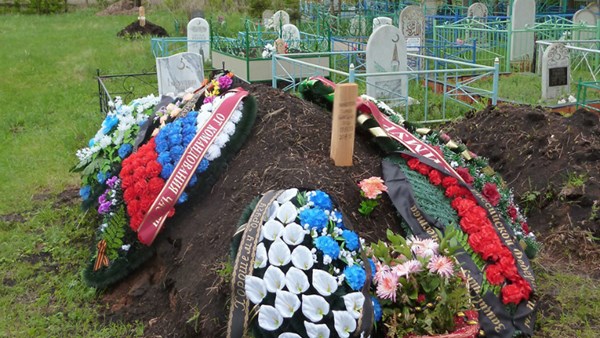Russia’s Defense Ministry has buried nearly a thousand soldiers in three years
According to representatives from the Russian Defense Ministry, the burial costs of active military personnel “does not exceed 0.25%.” Most of the money was spent to pay for the funeral of the Great Patriotic War veterans and military retirees.
The Ministry of Defense originally provided other data that showed that funeral costs for active personnel amounted to not more than 5% of the RUB 20.9 billion, but later the department announced it was a typo. Taking into account the typo, the number of active military personnel buried in 2013 would have increased to 20,000 people.
According to the calculations of RBC, at a cost of 0.25% of the 20.9 billion, taking into account the maximum amount of reimbursement for funeral expenses in 2013, the Ministry of Defense paid for funerals of about 250 active military personnel and participants of reserve training annually. In 2016, the budget included funds for the funeral of 277 active military personnel.
The last time the Department of Defense published statistics on military losses was in 2008. Then it was reported that 471 servicemen had died in a year, half of whom committed suicide. In 2009, the Russian prosecutor, General Yuriy Chaika, said that 478 people died in the army. After that, data on losses in the army were not publicized for five years.
According to Sergey Krivenko, a member of the Russian Presidential Council on Human Rights, the figures correspond to losses in the army from 2010 to 2011.
“The last time the data was declassified, numbers on army losses remained at the same level. Each year, the army was losing about 300 to 400 people against the current 200 to 250, despite the fact that since then the size of the armed forces has decreased from 1.2 million to 800 thousand people,” the member of the Presidential Human Rights Council said.
According Krivenko, from 2014 to mid-2015, a little more than 150 people died in the Russian army, although the real figure, according to him, could be twice as high.
The human rights defender also said that half of the dead servicemen that he found out about in 2014 and 2015 likely relate to losses from the “Ukrainian campaign,” because the place and circumstances of the death were not disclosed to the relatives of the deceased, and there was no clear information about the verification by the investigators or the military prosecution authorities about the facts of their deaths.
In November 2015, Vladimir Putin signed a decree according to which military casualties in peacetime became classified. Some journalists tried to challenge this decision, but the Supreme Court declared it legal.
